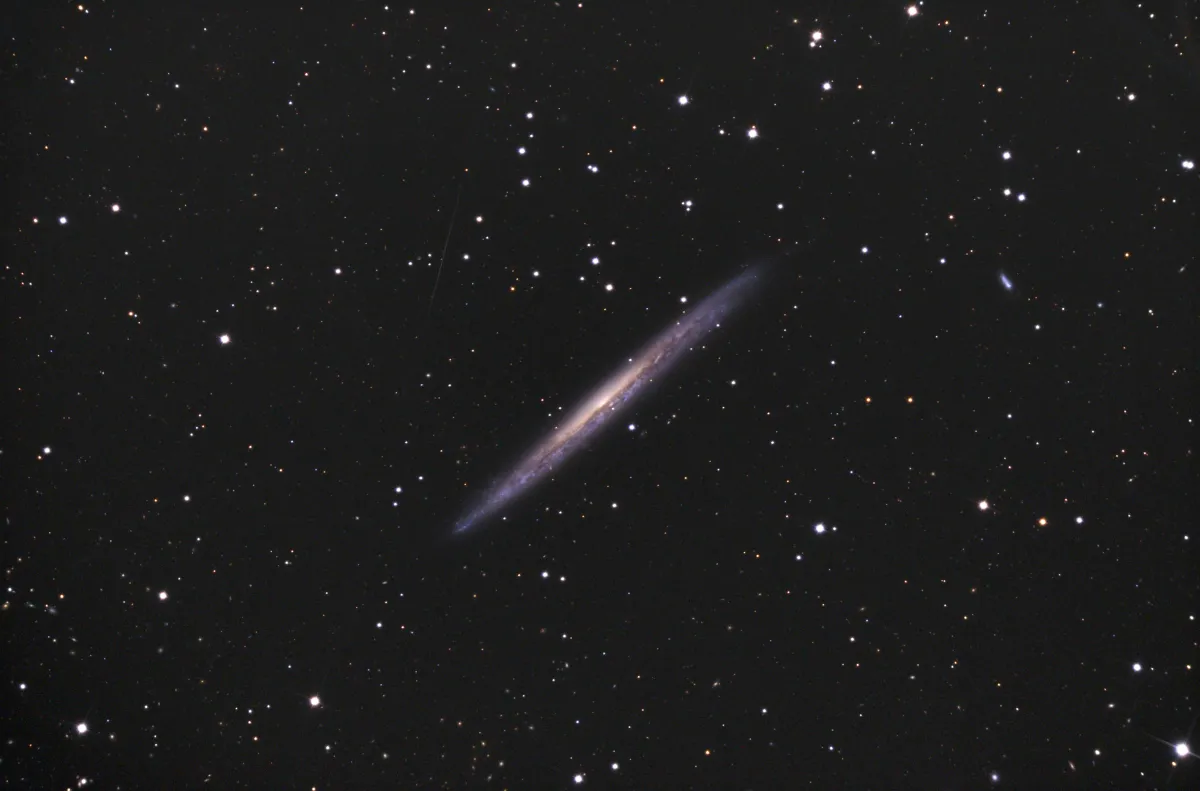Knife Edge Galaxy, Splinter Galaxy (NGC 5907)

History
On 5 May 1788, the German-British astronomer William Herschel discovered the nebula NGC 5907 with his 18.7 inch reflecting telescope. He cataloged it as II 759 and described it as «pretty bright, faint nucleus in the middle, 8 or 10' long, 2' broad» [464] On 13 April 1850, the Irish astronomer George Johnstone Stoney, an assistant to William Parsons, third Earl of Rosse, pointed his huge 72 inch reflecting telescope at this nebula and saw to the west of it a parallel ray, identified by John L. E. Dreyer as NGC 5906 included in his 1888 «New General Catalog of Nebulae and Clusters of Stars». [277, 313]
At the time of their discovery, the true nature of such nebulae was entirely unknown. What Stoney saw then was the fainter western part of this edge-on galaxy, separated by the band of dust. Because of its appearance, the galaxy was nicknamed the «Knife Edge Galaxy» or sometimes the «Splinter Galaxy».
Physical Properties
A remarkable detail of NGC 5907 only becomes visible in very long exposures: a tidal current that spirals in a wide spiral around the galaxy. This is a remnant of a past merger with a dwarf galaxy, which orbited the host galaxy several times, each time losing some of its mass before finally being fully incorporated. [441, 442] Distances range from 12.9 Mpc to 17.3 Mpc. [145]
| Name | RA | Dec | Type | bMag | vMag | B-V | SB | Dim | PA | z | D(z) | MD | Dreyer Description | Identification, Remarks |
|---|---|---|---|---|---|---|---|---|---|---|---|---|---|---|
| NGC 5906 | 15 15 52.1 | +56 19 50 | GxyP | 14.5 | 0.1 | 16.300 | A ray, vmE, par to h 1917 and close p it | GC 4086; part (knot) in N 5907 | ||||||
| NGC 5907 | 15 15 53.8 | +56 19 49 | Gx (Sc) | 11.1 | 10.3 | 0.8 | 13.3 | 12.6 × 1.4 | 155 | 0.002225 | 9.40 | 16.300 | cB, vL, vmE 155°, vg, psbMN | WH II 759; h 1917; GC 4087; UGC 9801; MCG 9-25-40; IRAS 15146+5629; CGCG 274-38; CGCG 297-10; FGC 1875 |
Finder Chart
The galaxies NGC 5907 is located in the constellation Draco. The best viewing time is January to October when it is highest at night.
